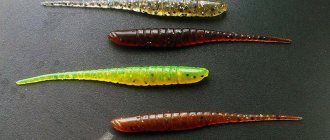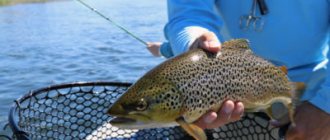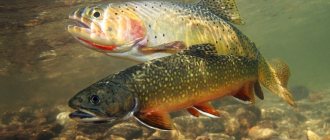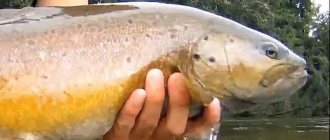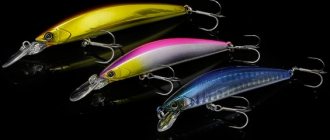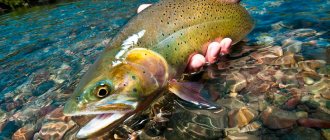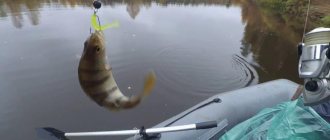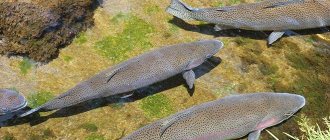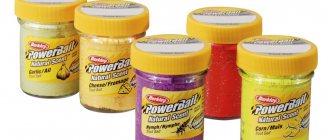As you know, fish react to artificial baits that resemble their diet. And what could be more natural in appearance than silicone baits? In terms of similarity to the prototype, no rotating or oscillating lures can compare with them. In the overwhelming majority of cases, even very naturally made wobblers are in much less demand among trout than various silicone baits.
In recent years, trout fishing with silicone baits has ceased to be a secret thanks to numerous reports from various world championships in fishing for predatory fish from the shore. But although numerous witnesses and direct participants in such events state the effectiveness of silicone baits, but are in no hurry to directly reveal the nuances of this fishing, for the vast majority of our spinning fishermen this still remains a secret behind seven seals. So I decided to try to remove this “blind spot” and talk about my own experience of catching trout with silicone baits, the fishing is interesting, exciting and very exciting. I’ll start my story with hunting rainbow trout, which is very popular in many countries.
Here in Latvia, for many years now, rainbow trout raised in fish hatcheries have been regularly released into some rivers. Therefore, meeting her in the wild is not so exotic. And if we add to this fishing on paid platforms, the number of which increases every year, then it becomes clear that there are very, very many opportunities to catch rainbow trout. You just need to set a goal and stock up on the appropriate set of baits. And the more diverse this set is, the greater the likelihood of good catches. And a significant share in this assortment should be occupied by silicone baits of various types.
Requirements for lures for trout fishing
Silicone and trout fishing have also received attention. Proper use of silicone baits when catching this predator allows, if not completely replacing the classic bait options, then significantly expanding them.
When going trout fishing, every fisherman must have with him a small set of silicone baits, which allow more flexible control of the fishing process.
What will be included in it is determined by everyone independently, but the composition of the “trout” set must meet certain rules developed by more than one generation of fishermen.
- The size and weight of the bait is a key parameter when fishing for trout. As a rule, small sizes and weights are used. This is due to the anatomy of the trout mouth. Depending on the size of the fish being caught, baits from 6 to 60 cm long and weighing from 4 to 10 g are used.
- Bait behavior. If fishing takes place in places with fast currents, then the play of the silicone bait should be balanced. The main requirement for bait with an active fishing technique is its stable passage in the fast flow of the river, as well as during aggressive play with jerks.
- For standing reservoirs, the requirements for nozzles are somewhat different. What is needed here is a stable game at the same depth at a low retrieve speed, which is not so easy to achieve without a high-quality bait accessory.
- The next nuance is the color. The bait material used should imitate the natural food supply of trout in a particular body of water and river (stream). There are a large number of colors. The most popular colors are green, red and pink. The use of “acid” colors depends on the time of year of fishing. They are more suitable for fishing in muddy water.
- And the last thing that you should pay a lot of attention to is the hooks used in the equipment of silicone baits. The sharpening must be perfect, and it is better to use double or triple hooks.
Let's celebrate! It is better to prepare and determine which products to use in advance, before arriving for fishing.
And on the spot it is already more precise, taking into account the fishing location and the time of year, to select this or that gear.
Loading Features
Now you need to decide on the load. The most popular today is the Carolina rig with a bullet-shaped sinker. Since trout often tend to live in the lower water column, it is better to choose a bullet with a more rounded shape. Dragging along the bottom, such a sinker will actively muddy the water, thereby getting the fish interested in what is happening. In addition, rounded bullets roll more easily over rocky river bottoms.
If we are fishing for trout in the upper layers of water and we need to maintain the buoyancy of the bait, then we should use a floating weight. These can be water-filled floats, bombards or bobbers. The main thing is to correctly calculate the strength of the current and the mass of the load.
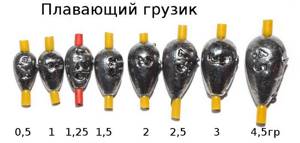
Silicone lures for trout
There are a lot of baits offered by various manufacturers, and therefore you need to navigate this enormous variety well. These fishing consumables may differ in both shape and size, and color.
If everything is relatively clear in terms of the size and color of silicone trout baits, then with the shapes, especially for beginner spinning anglers, not everything is so clear. There is a wide range of this product, with names that you won’t immediately remember.
Vibrotails

This is a small artificial fish made of rubber (silicone), soft plastic or polymer. The vibrotail consists of a small body and tail.
Sometimes this bait looks like a long worm. The structure of the bait can be smooth or scaly-ribbed. It can completely replicate the structure of a small fish, which is not necessary.
The main role of this fishing structure is its tail section. Closer to the main body it is narrower, and the end is thicker and, as a rule, made at an angle. The tail can end in different ways: with a shovel, a notch, a spear, etc.
Advantages of silicone vibrotails:
- Similarity to live bait (live bait).
- Silicone is tolerant of low temperatures and does not lose its elasticity.
- Rubber vibrating tails can be made from edible silicone.
- Small price.
The only downside is that silicone wears out quickly (new ones need to be equipped frequently) and is inherently a consumable material.
Twisters
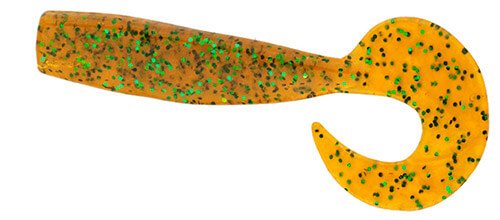
The curly ponytail was invented in the first half of the 70s by an American company. Russian fishermen called this bait a twister - a curl. Its body structure is similar to a worm with a flat, spiral tail. It can be equipped with other elements: a floating head, a firefly.
Like the vibrotail, the twister is an active bait designed for dynamic spinning fishing. However, it behaves well even with slow, imposing wiring.
Differences from vibrotail and advantages:
- The oscillation frequency of a twister is significantly higher than its counterpart, this is especially noticeable with a slow wiring method.
- The casting range allows fishing from the shore.
- It is not afraid of snags and is excellent for fishing in snags and places rich in vegetation.
- Its wiring behavior imitates cephalopods and crustacean mammals.
- Can be used as an addition to the main spinning bait.
Tubes
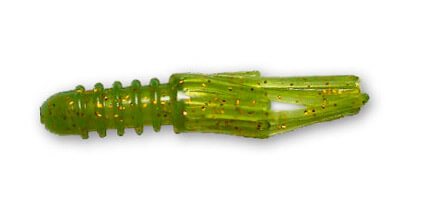
A very interesting and unique attachment. It takes its name from the word “tube”, translated into Russian as a tube. The design is simple: a hollow silicone cylinder equipped with tentacles.
It is equipped with a special hook, although there are practically none on sale on the Russian market, but it can be replaced with an offset hook and a pellet, which is placed inside the body from the side of the tentacles. Tubes are classified as light-weight gear - the weight of even the largest tube is 1-1.5 grams.
The tube is intended for fishing in the most snaggy, “evil” places with a lot of vegetation. This bait is thrown into the “windows”, time is given for it to sink on a slightly lowered fishing line and the game is played with a small jerk.
At the same time, the tube makes uneven, multi-vector movements, provoking the fish to attack. Even in case of the first failure, the bait can be released again and provocations can continue.
Note! This equipment, unusual for a Russian, behaves excellently on snags in forest rivers and reservoirs. It is practically not hooked, and in case of a snag it is not so valuable as to be upset.
Silicone worms
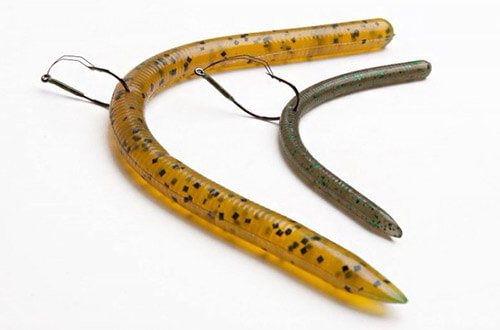
Another type of rubber fishing consumables is artificial worms. In their structural structure they are very similar to twisters. The main difference is the longer body.
The body of worms can be smooth or ribbed. The tails are cone-shaped and flat. The length of the body and tail are almost the same, although this is not necessarily the case. In general, silicone worms can vary in shape and size.
Worms are often made from edible rubber, and if not, the silicone is impregnated with various flavoring additives.
Pros of artificial worms:
- They are stored for a long time.
- Stays well on the hook.
- Impregnated with flavoring additives.
- Completely imitate natural bait.
Silicone worms from Mister Twister
Here we should say separately about “edible rubber” and how rainbow trout relate to it. The fact is that “inedible rubber” simply does not exist among silicone worms intended specifically for trout fishing. And although different manufacturers have their own tricks with the composition of the impregnation of silicone worms and its saturation, the basis for all of them, although with minor deviations, is practically the same: any impregnation, to one degree or another, has the smell of compound feed that is fed to trout in fish hatcheries. And this smell is captured very well by trout. I don’t presume to judge the sense of smell of literally all types of fish, but the fact that trout is able to “sniff out” bait is undoubtedly something that has been confirmed more than once in practice. Even brook trout, born and raised in the wild, completely unfamiliar with the smell of compound feed, respond perfectly to smelling silicone worms. And, believe me, there is a difference in what kind of worm to catch in the rivers - a “fresh” one, just taken out of the package, or one that has been rinsing in the water for several hours.
But let’s return to the smelly series from Mister Twister: it also features worms specifically for trout fishing. They are called Trout Worm (photo 5). We are offered a small bag containing 3 garlands made up of five soft and elastic worms. Each one is 2.5 inches (6.35 cm) long and comes in 7 colors.
Silicone baits are heavily saturated with a smelling liquid - when we take the worms in our hands, we instantly feel it even with our fingers. But no matter how abundantly the silicone worm is impregnated, you should definitely take into account the fact that the impregnation itself does not last forever - and is washed off when used. Therefore, the worm should be changed from time to time. I recommend that after rinsing in water for half an hour, put the worm back into the package and take it out “fresh.” The same should be done with active biting - after catching two or three fish, it is better to replace the bait. Such a replacement is also one of the basic rules for using silicone worms. This applies to literally all silicone worms, not just representatives from Mister Twister.
But let's get back to the Mr. Twister bag. Need bait? We open the bag, take out the garland, tear off one worm, and return the thinner garland back to the packaging. The bag itself is sealed and very easy to open and close. And, naturally, the smell of silicone worms practically does not disappear. But it’s not just that; the main charm is the size of the container. Such miniature packaging is much more convenient to store and use while fishing than the vast majority of similar bags with silicone baits from other companies. This package fits easily into any vest pocket. And the minimum workload of the spinning rod, especially during multi-kilometer crossings along small rivers, is highly valued. Everything happens very simply: we put several packages with various silicone worms in our chest pocket - and we get rid of the need to painfully select the right size of various bait boxes that will fit into the vest pockets. Agree, this is quite important. Then in the same pocket we put a small reel with fluorocarbon fishing line, which we need for leashes. And there is also a bag with several bullet-type weights of different weights. And for a complete set - a couple or three more different bombards. And that’s it – we are ready for full-fledged fishing and can fully count on a good catch (photo 6).
Top silicone baits
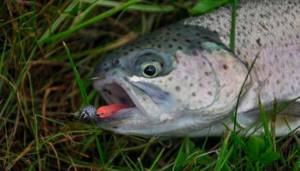
- In 5th place. Floating silicone from . Worms from this manufacturer showed very good results.
- In 4th place. Silicone nozzle for trout fishing from Ojas Oks. Floating larvae have proven excellent. Flies well, swims well.
- 3rd place. Silicone model Ribber Pupa from the manufacturer Trout Zone. Heavy silicone, perfect for both passive fishing for capricious trout and active play (excellent tail play).
- 2nd place. The well-known Larva silicone from LBaits. Corn and white colored baits are excellent for catching.
- Silicone leader for trout fishing. Large and small Plant baits from Trout Zone. The most catchable type of silicone.
Reviews from fishermen
My opinion is this... Everything is important: color, shape, edibility and presentation. There are edible baits that are caught almost always, and there are ones that catch at certain times. When the fish is hungry and actively biting, it doesn’t matter what kind of bait... Chinese oak or soft branded bait. For myself, I have personally identified several types and colors that I am confident in. By company, these are luckyjohn and Rybalov. Grade:
Andrey
Recently I experimented with a new product from a Japanese rubber manufacturer. Jackall Wobbring measures 3 inches. The bait, something between a twister and a vibrotail, was mounted with a classic jig - no problems, the rubber did not tear, I led it with offset. The first throw is an attack. On a classic jig - a stable bite. And what pleased me was that the rubber was practically undamaged. Grade:
Kirill
Excellent Larva silicone equipment from Fanatik. The lure is 1.6 inches long, similar in structure to a dragonfly larva, with lurex, edible rubber. I use it for ultralight jig tackle. He behaves great. The packaging says it's predatory, but everyone takes it. In terms of catchability - five points. So I recommend it! Grade:
Vadim
We have been using it for several years now. Low price, many color options. Larva is very catchy, we practice active fishing. We mainly choose dragonfly and leech, the colors are brown and purple. If you get hooked, you don’t mind losing – the price is symbolic. I recommend it to all beginners! Grade:
Alexander
Jackall I Shad Tail 3.8′ – Japanese tires. Moderate stiffness. She lived for a long time - she withstood ten bites. The shape is unique, I've never seen anything like it before. I equipped it only with offset, I don’t recognize doubles. You need to try this form only in a smaller size - I’m sure there will be more bites. And yet it is the fisherman who catches the fish, not the bait! Grade:
Valery
In conclusion of the article, it should be noted that silicone baits should be stored in special polymer packaging, preventing air from entering. Then you will be sure that the bait will retain its elasticity and attractive smell.
